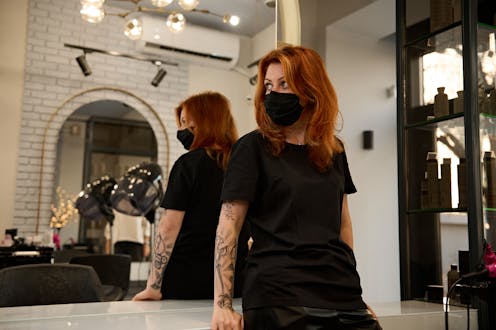How does Omicron compare with Delta? Here's what we know about infectiousness, symptoms, severity and vaccine protection
- Written by Sanjaya Senanayake, Associate Professor of Medicine, Infectious Diseases Physician, Australian National University

Since Omicron was detected in South Africa in late November[1], the SARS-CoV-2 variant has spread[2] to more than 165 countries and is now the dominant strain[3].
Omicron has more mutations than other strains: 72 in total[4], the most concerning of which make the virus more transmissible and better able[5] to evade the immune system and vaccines.
So how does Omicron differ to Delta in infectiousness, symptoms, severity and vaccine protection.
Read more: How new COVID-19 variants emerge: Natural selection and the evolution of SARS-CoV-2[6]
How contagious is it?
The basic reproduction number (R0) is one gauge of the infectiousness of a virus. It tells you how many susceptible people a single infected person will themselves go on to infect.
Danish researchers estimate[7] the effective reproduction number of Omicron is 3.19 times more than that of Delta, which had an average R0 of 5[8] (ranging from 3.2 to 8).
Similarly, Japanese research concludes[9] Omicron is 4.2 times more transmissible than Delta early on.
So, in a fully susceptible (unvaccinated and uninfected) population, one person with Delta would, on average, infect five other people, while one person with Omicron could transmit the virus to about 20 others.
This makes Omicron one of the most infectious agents known.
Another practical indicator of a virus’s infectiousness is how easily it spreads within households. This is known as the secondary attack rate.
Studies[10] from various countries[11] have consistently shown[12] Omicron has a higher secondary attack rate in households[13] than Delta. In a household with Omicron, householders have a 14-50% chance of getting infected.
Why is Omicron more infectious?
Omicron’s varied mutations allow it to evade the immunity generated by both previous infections and vaccination.
Studies have also shown[14] Omicron infects and multiplies in the upper airways 70 times faster than Delta.
There also seems to be more asymptomatic infections[15] with Omicron. This probably facilitates transmission, as people don’t realise they’re infected and will move around normally.
How long does it take to become sick?
The incubation period of Omicron – the period from being infected to getting symptoms – is around three days[16], with the person often becoming infectious a day or two before symptoms emerge.
This is shorter than with Delta and earlier variants.
The average duration of illness[17] is shorter with Omicron than Delta: five days compared to six.
With new isolation rules implemented during the Omicron wave, seven days after testing positive[18] to COVID, those who are symptom-free will no longer have to isolate.

















